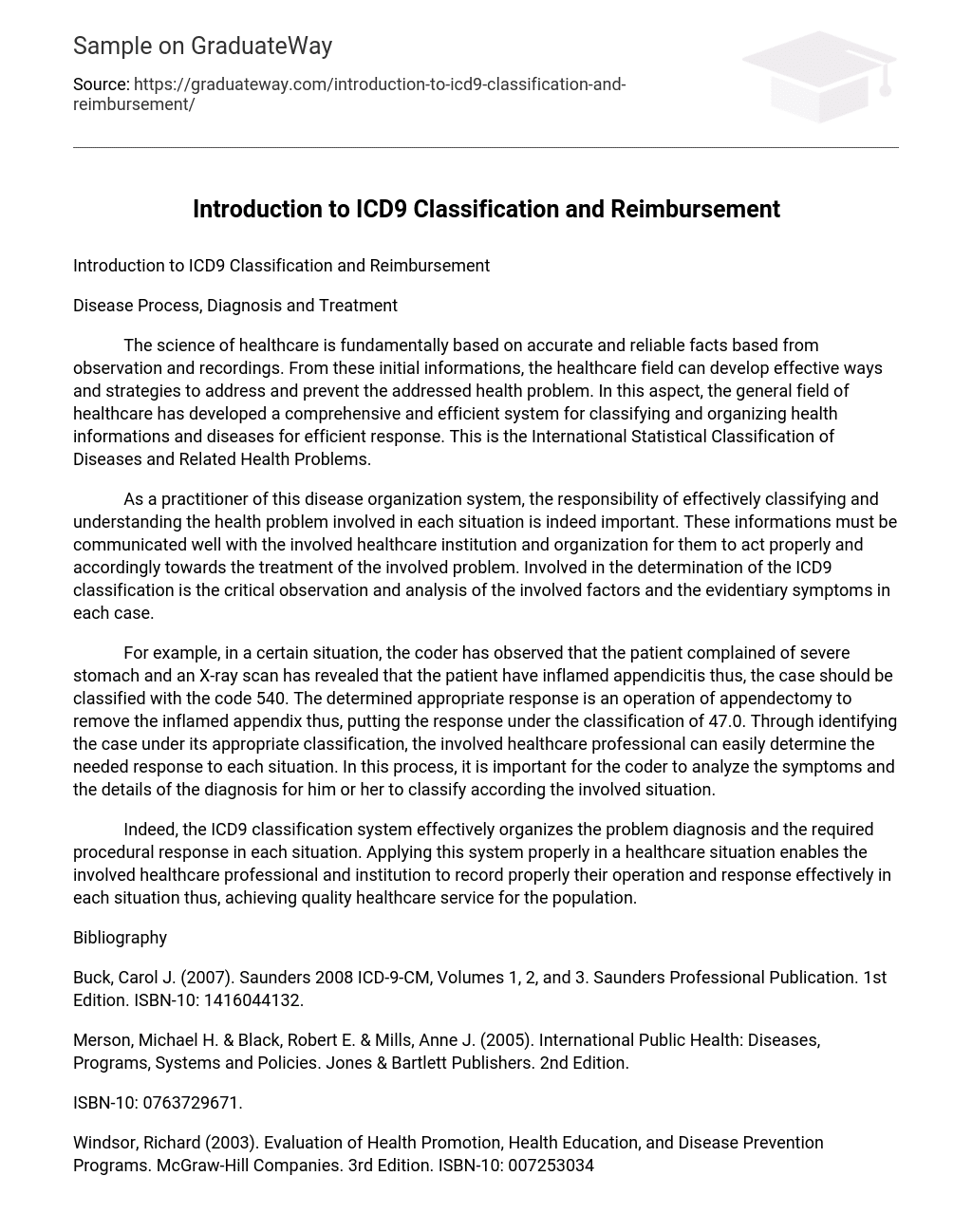Disease Process, Diagnosis and Treatment
The science of healthcare is fundamentally based on accurate and reliable facts based from observation and recordings. From these initial informations, the healthcare field can develop effective ways and strategies to address and prevent the addressed health problem. In this aspect, the general field of healthcare has developed a comprehensive and efficient system for classifying and organizing health informations and diseases for efficient response. This is the International Statistical Classification of Diseases and Related Health Problems.
As a practitioner of this disease organization system, the responsibility of effectively classifying and understanding the health problem involved in each situation is indeed important. These informations must be communicated well with the involved healthcare institution and organization for them to act properly and accordingly towards the treatment of the involved problem. Involved in the determination of the ICD9 classification is the critical observation and analysis of the involved factors and the evidentiary symptoms in each case.
For example, in a certain situation, the coder has observed that the patient complained of severe stomach and an X-ray scan has revealed that the patient have inflamed appendicitis thus, the case should be classified with the code 540. The determined appropriate response is an operation of appendectomy to remove the inflamed appendix thus, putting the response under the classification of 47.0. Through identifying the case under its appropriate classification, the involved healthcare professional can easily determine the needed response to each situation. In this process, it is important for the coder to analyze the symptoms and the details of the diagnosis for him or her to classify according the involved situation.
Indeed, the ICD9 classification system effectively organizes the problem diagnosis and the required procedural response in each situation. Applying this system properly in a healthcare situation enables the involved healthcare professional and institution to record properly their operation and response effectively in each situation thus, achieving quality healthcare service for the population.
Bibliography
Buck, Carol J. (2007). Saunders 2008 ICD-9-CM, Volumes 1, 2, and 3. Saunders Professional Publication. 1st Edition. ISBN-10: 1416044132.
Merson, Michael H. & Black, Robert E. & Mills, Anne J. (2005). International Public Health: Diseases, Programs, Systems and Policies. Jones & Bartlett Publishers. 2nd Edition.
ISBN-10: 0763729671.
Windsor, Richard (2003). Evaluation of Health Promotion, Health Education, and Disease Prevention Programs. McGraw-Hill Companies. 3rd Edition. ISBN-10: 0072530340.





